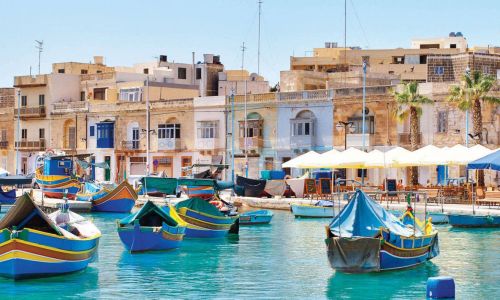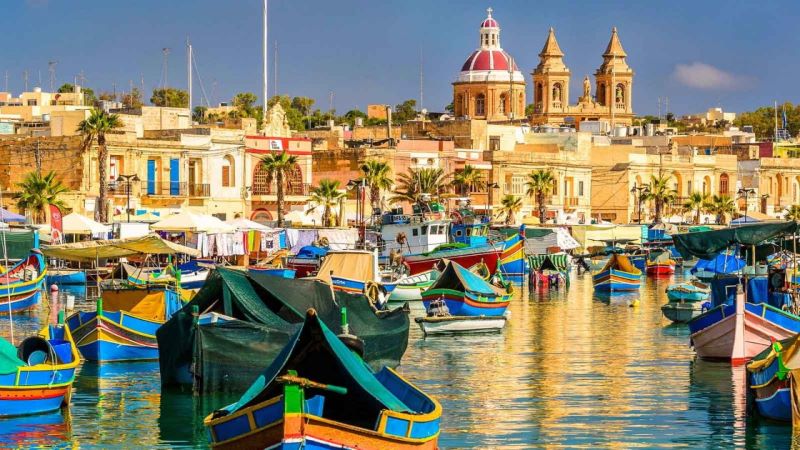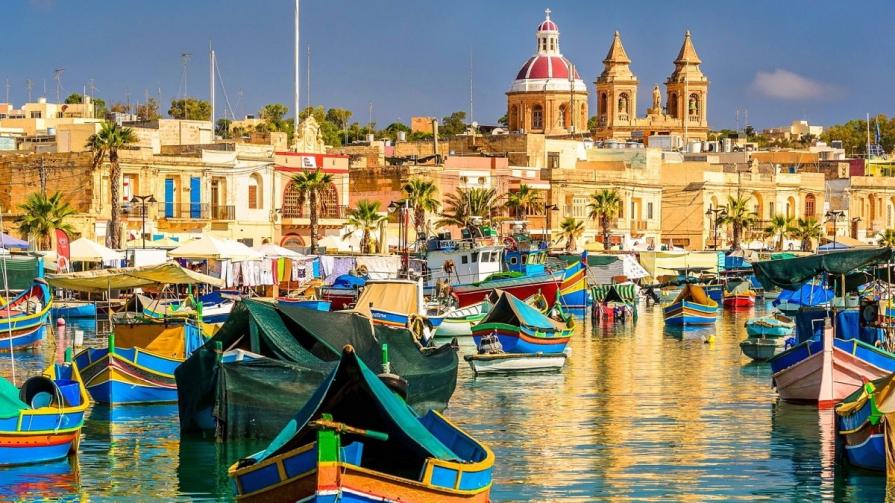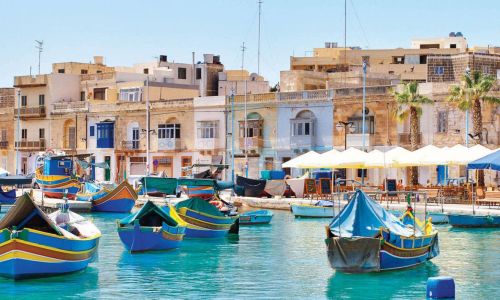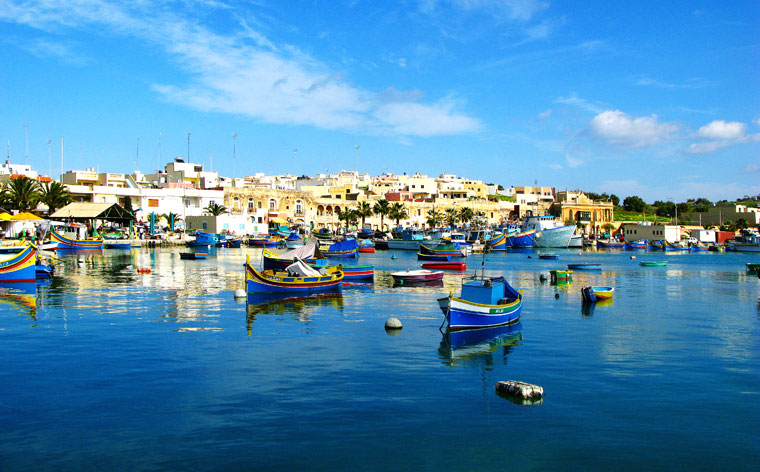Gozo Salt Pans are an extraordinary sight that will take your breath away!
These vast salt-evaporation ponds stretch across the Maltese island of Gozo, creating a breathtakingly beautiful landscape.
The history of these remarkable salt pans goes back centuries and they continue to play an important role in the local economy.
Not only do visitors get to experience this unique environment up close, but they also get a rare glimpse into the ancient process of producing salt from seawater.
From exploring the impact of environmental changes on this fragile ecosystem, to engaging with educational programs and conservation efforts, there is much to discover on a visit to Gozo Salt Pans.
Overview of Salt-Evaporation Ponds
Salt-evaporation ponds are essential for Gozo’s survival, providing a vital source of income and livelihoods for its people. These shallow bodies of water have been used to obtain salt since the early days of human civilization.
The process involves trapping seawater in natural basins and harvesting the salt through evaporation—a simple yet effective idea that is still employed today in Gozo. In order to sustain this important industry, conservation strategies must be implemented in order to reduce any potential environmental impacts that could arise from overharvesting. Additionally, it’s also important to keep up with the latest trends within the salt industry as these can help ensure a profitable future for Gozo’s salt-evaporation ponds.
The unique climate conditions found on the island of Gozo provide ideal conditions for the production of quality sea-salt. The high temperatures during summertime combined with strong winds result in faster evaporation rates, allowing salt producers to produce more product within shorter time frames. This has allowed local producers to become more competitive within their respective markets while helping them achieve higher profits due to improved efficiency and productivity levels.
In terms of environmental impact, there are certain measures that can be taken by producers and authorities alike in order to minimize any potential damage caused by overharvesting or improper use of resources. One such measure is ensuring proper maintenance and cleaning practices are observed when dealing with brine pools so as not to introduce foreign substances into ecosystems surrounding the area where they operate. Additionally, authorities should also create regulations governing activities related to harvesting processes such as setting limits on how much salt can be extracted from each pool at one time so as not avoid depleting them too quickly or unintentionally damaging their delicate ecosystem balance.
Gozo’s salt-evaporation ponds have long been an integral part of its economic landscape and will remain so for many years to come if properly managed and regulated according. With this in mind, it’s clear that both producers and authorities share responsibility when it comes maintaining a healthy balance between economic gain and sustainable development goals – all while continuing working towards preserving this valuable asset for future generations.
To move forward successfully, further research needs done into improving existing conservation strategies as well as understanding current trends within the global sea-salt market so that appropriate action may be taken accordingly.
History of the Gozo Salt Pans
You’ve probably heard of salt-evaporation ponds, also known as Gozo Salt Pans. These ponds have a centuries-old history as a method for harvesting salt. This ancient technique was used for centuries until the Industrial Revolution changed how salt was produced. Nowadays, modern techniques, such as solar evaporation and vacuum evaporation, are used to produce salt from seawater in the Gozo Salt Pans.
Ancient salt harvesting methods
In Gozo, salt harvesting dates back centuries and you’ve got to hand it to the locals for perfecting the art of salt-harvesting like a symphony.
Salt was traditionally harvested using solar powered evaporation methods that had been around since antiquity. The locals built massive salinas or salt pans in which seawater was diverted into large basins where it was left to evaporate under the Mediterranean sun.
As the water evaporated, highly concentrated brine remained and was then collected in clay pots for further processing. The method proved incredibly efficient and produced high-quality salt – something that would become even more important during the Industrial Revolution when demand for salt went up significantly across Europe.
The ancient harvesting methods of Gozo’s salinas continue to be celebrated today, as they are a reminder of how far humans have come in terms of our understanding of science and technology.
Impact of the Industrial Revolution
With the dawn of the Industrial Revolution, traditional salt-harvesting methods became more and more important as demand for salt increased all across Europe.
In Gozo, this demand had a profound effect on the islands’ salt pans: sustainable harvesting practices were adopted to ensure that resources could be used over and over again; production rates shot up due to improved efficiency; and an awareness of the local salt water ecology led to an increased focus on conservation efforts.
These changes revolutionised how salt was harvested in Gozo—a far cry from ancient processes which had been used for centuries prior.
The newfound attention to sustainability helped protect resources while still meeting Europe’s growing demand, allowing the islanders to continue their age-old tradition without damaging their precious environment.
As a result, Gozo’s salt pans remain some of the most well-preserved in Europe today—a testament to the impact that the Industrial Revolution had on these ancient methods of harvesting salt.
Modern day salt harvesting techniques
Modern day salt harvesting has come a long way since the days of the Industrial Revolution, as efficient techniques have been developed that are as precise as a surgeon’s scalpel.
It is like an intricate dance, with every movement carefully choreographed to maximize yields while preserving the surrounding environment.
Traditional methods such as hand-raking and scooping are still employed in Gozo’s salt pans, but renewable resources like solar energy and wind power are also being used to produce more sustainable harvests.
The combination of ancient practices and modern technology has allowed salt production to remain profitable while protecting the environment from potentially harmful effects.
As a result, salt pans can continue to play an important role in the local economy.
The Role of Salt Pans in the Local Economy
The Gozo salt pans have long been a cornerstone of the local economy, providing employment and resources to the community for centuries. Salt trading has been an important economic activity in this area since ancient times.
Even today, the traditional salt harvesting techniques are still used by many locals, providing them with a steady income source. The salty water from these pans also provides a valuable resource for other industries in the region such as fishing and agriculture.
In addition to providing employment opportunities, the Gozo salt pans also have a significant economic impact on the local economy. It is estimated that about one-third of all salt produced in Malta comes from these pans, making it an essential part of their trade balance. Furthermore, the production of salt helps to increase tourism revenues due to its use as flavoring and seasoning for many popular dishes.
The presence of these salt pans also creates considerable environmental benefits for the region. The salty water collected here can be used to irrigate nearby farms and gardens, which helps to boost crop yields and improve soil quality. Additionally, it serves as an important habitat for numerous species of birds and aquatic life which depend on it for survival.
As such, it is clear that these salt pans play an integral role in both sustaining livelihoods and aiding in conservation efforts throughout Gozo’s economy. From supplying sustenance through food production to creating jobs through tourism-related activities – they are truly invaluable assets that should be cherished by both current and future generations alike!
With this in mind, we encourage visitors to take advantage of this unique opportunity to explore some of Malta’s most fascinating cultural sites while simultaneously supporting its local communities; transitioning seamlessly into our next topic: taking a trip to visit the renowned Gozo salt pans!
Visit the Salt Pans
You may have heard of the beautiful salt pans in Gozo, but did you know that they’re not just aesthetically pleasing? The salterns are also vital to the local economy. Not only do they provide jobs for locals, but they also play an important role in preserving the history and culture of Gozo, making them a great destination for tourists who want to explore this unique area.
If you’re looking to visit these salt pans, there’s no better place than Gozo – it’s home to some of the most spectacular sites on earth with its crystal clear waters and white sandy beaches. But if you want to really experience what makes these salterns so special, then a tour is your best bet! You’ll get an up-close look at the ancient salt mining techniques used by local people for generations and learn about how they’ve been preserved over time. Plus, you can take part in traditional activities such as harvesting sea salt from the pans or helping out with maintenance work around the site.
But before heading off on your tour, it’s important to note that while these salterns are incredibly beautiful, they’re also delicate ecosystems that need our help for their preservation. When visiting any of these sites, it’s essential that you follow all guidelines set out by local authorities – this will ensure that future generations can continue to enjoy this unique environment without damaging it further.
The best way to appreciate the beauty and importance of Gozo’s salt pans is by taking a guided tour through them. Not only will it give you insight into their historical significance, but it will also allow you to witness first-hand how local people use ancient methods like salt mining and salterns preservation today. This will be a truly unforgettable experience that will stay with you long after your visit has ended!
With this knowledge in mind, let us now turn our attention towards understanding how exactly sea salt is produced from these amazing structures.
Salt Production Process
Experience the mesmerizing process of harvesting salt from the salterns! Gozo’s salt pans have been utilized since the Roman times, and they’re still used to extract salt by traditional methods.
The extraction process begins when sea water is collected in shallow evaporation basins, known as salterns. As the water evaporates in the sun, it leaves behind a mixture of minerals such as magnesium chloride, potassium chloride, and sodium sulfate. This mixture crystallizes into sea salts, which are then harvested manually or mechanically.
The drying process for these salts takes place in dryer beds where they’re spread out on large slabs so that any remaining moisture can escape before they’re stored in containers for sale. During this period, care must be taken to ensure that only high-grade salts with their original chemical composition remain intact. Furthermore, regular maintenance checks need to be done to make sure that no contaminants enter the system during this phase of production.
Salt produced from Gozo’s salterns has a unique mineral content, which adds flavor and complexity to dishes. It has a higher mineral content than most commercial table salts because it isn’t subjected to any bleaching or other treatments that strip away its natural components. Additionally, its light grey color indicates that it contains iron oxide and other trace elements that contribute to its distinct taste profile and nutritional value.
These characteristics make Gozo salt an excellent choice for cooking, as well as curing meats and adding flavor to many different types of cuisine. Its unique flavors and aromas will leave your taste buds tantalized while also providing essential vitamins and minerals needed by your body for optimal health benefits – making it an ideal ingredient for vibrant meals with fresh local produce!
Transitioning into discussing ‘the benefits of Gozo salt’, let’s take a closer look at how choosing authentic Gozitan products can benefit us all!
The Benefits of Gozo Salt
You’ve learned a great deal about the salt production process in Gozo. Now let’s take a look at some of the benefits of using Gozo salt in particular.
For starters, traditional harvesting techniques are still employed here, which helps to preserve the environment and protect natural resources. Salt harvesting has been practiced in this region for centuries, with careful attention paid to sustainability and conservation. This makes it a valuable resource not just for its many uses but also for its environmental benefits.
Gozo salt is renowned for its purity due to minimal levels of impurities that can be found in other salts from around the world. This means that it is free from potentially harmful contaminants and pollutants which could otherwise have an adverse effect on human health. As such, it is highly sought after by chefs and food lovers alike as they know that they’re getting a product that is safe for consumption without any compromise on taste or quality!
Another advantage of Gozo salt is its versatility – there are so many ways to incorporate it into your daily routine or cooking style. From sprinkling it over your favorite dishes or adding flavor to savory sauces, you can use this type of salt to give your meals an extra kick of flavor while reaping all the nutrients and minerals associated with sea salt too!
Finally, you can also use Gozo salt as part of your beauty regime by mixing it with oils or water for a soothing bath soak or facial scrub – perfect for restoring balance naturally!
These are just some of the advantages associated with Gozo salt – an environmentally friendly way to add flavor to your meals without having any negative impact on our planet. With changing climates impacting our environment every day, preserving local resources through sustainable practices like traditional harvesting techniques has never been more important than now!
The Impact of Environmental Changes
Feeling the effects of changing climates, it’s essential to ensure the sustainability of traditional harvesting techniques in order to protect our environment.
Gozo salt pans are a great example of this: they have been used for centuries as an effective way to produce salt and other minerals. However, due to environmental changes like rising sea levels and more frequent storms, these salt pans are increasingly under threat.
Adaptation strategies must be put in place in order to protect them from further damage while still allowing for continued production.
The impact of climate change on Gozo’s salt pans has been significant. Rising sea levels have caused flooding which has damaged many areas along the coastline where the pans are located. This has resulted in soil erosion, reduced water quality, and increased salinity levels which can make it difficult for organisms living within them to survive. In addition, more frequent storms have caused waves that further erode the shoreline which increases the risk of inundation and destruction of these valuable resources.
In response to these environmental changes, adaptation strategies need to be implemented in order to ensure their long-term sustainability. One such strategy is creating artificial barriers such as breakwaters that can help reduce wave action and prevent further erosion or flooding from occurring. Additionally, restoring natural habitats with vegetation is also beneficial as it helps reduce runoff and provides a buffer against storm surges or floods that may occur during high tide events. Finally, proper management plans should be put into place so that production isn’t hampered by these environmental changes but rather enhanced through careful regulation and monitoring.
It’s clear that environmental changes pose a major threat to Gozo’s salt pans but with proactive adaptation strategies we can protect them now and for years into the future; ensuring not only their continued productivity but our own sustainable practices too.
Conservation efforts will be key moving forward if we want these precious resources to remain viable and productive for generations ahead – something we all should strive towards achieving!
Conservation Efforts
It’s time to take action and conserve Gozo’s salt pans for generations to come! These once vibrant marshlands have been affected by environmental changes, but there are still steps that can be taken to ensure their sustainability. One of the most important methods of conservation is through sustainable harvesting practices and enforcing existing conservation laws.
| Conservation Efforts | Advantages | Disadvantages |
|---|---|---|
| Sustainable Harvesting Practices | Reduce waste, respect local ecosystem balance | High cost for implementation, difficult to enforce in some areas |
| Existing Conservation Laws | Protect vulnerable species, maintain cultural heritage sites | Economic burden on citizens who rely on natural resources for income |
Sustainable harvesting practices involve collecting only what is needed from an area while respecting the balance of the local ecosystem. This ensures that future generations will also be able to reap the benefits from these marshlands without having a negative impact on its inhabitants. Although this method may require more upfront costs for implementation, it has many long-term advantages such as reducing waste and protecting wildlife populations. Additionally, it is essential that existing conservation laws are enforced in order to protect vulnerable species and preserve cultural heritage sites. Unfortunately, this can pose an economic burden on citizens who rely on natural resources for income which must be addressed with alternative solutions.
Educational programs focusing on sustainable stewardship and responsible consumption are another way of conserving Gozo’s salt pans for future generations. By teaching individuals about the importance of preserving these marshlands they can become more aware of their role in keeping them safe and healthy. Through increased understanding we can create a collective effort towards conservation efforts so that these precious ecosystems do not continue being threatened by environmental changes or irresponsible practices.
Educational Programs
The conservation efforts put forward in Gozo have been successful in preserving the area’s salt pans. Now, educational programs are being developed to ensure that the sustainability of these salt pans is maintained for future generations.
As part of these programs, sustainable harvesting techniques are being taught to the local population to demonstrate how they can harvest salt without damaging the environment or impacting their cultural heritage.
These educational initiatives aim not only to teach people about sustainable harvesting and its importance but also provide them with a deeper understanding of their cultural heritage and how it is connected to the land around them. By understanding this connection, locals can learn how to use salt pans responsibly while maintaining their cultural traditions.
Moreover, interactive activities such as field trips and hands-on demonstrations help participants understand what they’re learning more effectively than traditional teaching methods alone. These activities also give people an opportunity to explore and discover first-hand what makes Gozo so unique — from its history-rich landscapes and diverse ecosystems to its rich culture — providing a truly unforgettable experience.
Participating in these educational programs helps locals gain a greater appreciation for Gozo’s beautiful natural resources and encourages them to take action when it comes time for them to harvest salt responsibly, allowing them to preserve both their culture as well as their environment for many years into the future. With this knowledge, they’ll be able to continue enjoying all that Gozo has offered throughout history: unique experiences that make it stand out among other locations across the globe.
Unique Experiences in Gozo
Experience the unique beauty of Gozo and discover why it stands out from other locations around the world. Gozo offers a truly one-of-a-kind experience. From its salt pans to its local cuisine, Gozo has something for everyone. Whether you’re looking for a relaxing beach vacation or an educational journey into the island’s history and culture, Gozo is sure to provide you with lasting memories and unforgettable experiences.
Enjoy the unique process of salt production, complete with traditional tools and methods.
Taste mouthwatering dishes created with fresh ingredients from nearby farms and fisheries.
Explore majestic landscapes that offer stunning views of both land and sea.
Immerse yourself in the stunning beauty of this Maltese paradise as you explore its many wonders – from salt production to local cuisine – and discover why Gozo stands out from other travel destinations around the world.
Frequently Asked Questions
Is Gozo Salt organic?
Utilizing modern-day sophistication, the answer to whether Gozo salt is organic is a resounding ‘yes’. Organic certification has been granted and sustainable harvesting practices are employed, so you can be sure that this salt is indeed organic. Rest assured that enjoying this salty treat won’t compromise your desire for freedom.
How much salt is produced from the Gozo Salt Pans?
Salt harvesting has a significant environmental impact, with Gozo Salt Pans producing an estimated 11,000 metric tonnes of salt each year. You can help reduce this impact by supporting sustainable practices.
Are there any health benefits associated with consuming Gozo Salt?
Yes, consuming Gozo salt can provide health benefits due to its unique chemical composition and mineral content. It contains essential minerals such as magnesium, calcium, and potassium which all have important roles in maintaining good health. Eating it can help boost energy levels and improve overall wellbeing.
Is there a minimum age requirement to visit the salt pans?
No age limit is required to visit the salt pans; however, a tour guide may require visitors to be at least 16 years of age. Be sure to check with them before planning your trip! Enjoy exploring and discovering this unique landscape.
Are there any special events or activities held at the salt pans?
You can experience salt harvesting and wildlife watching at the salt pans! Enjoy activities such as bird-watching, admiring nature, or taking part in traditional salt production. Explore the beauty of this unique environment and create lasting memories.
Conclusion
You’ve seen the Gozo salt pans firsthand and learned about their history, role in the local economy, production process, and conservation efforts.
You’re now aware of how environmental changes affect these unique salt pans.
It’s ironic that something so small can have such a big impact on the region.
Despite this, seeing the beauty of the landscape and learning about its history has been an incredible experience that you won’t soon forget.
Not only did it leave you with a greater understanding of how integral they are to Gozo’s culture and economy, but also with a newfound appreciation for them all.








